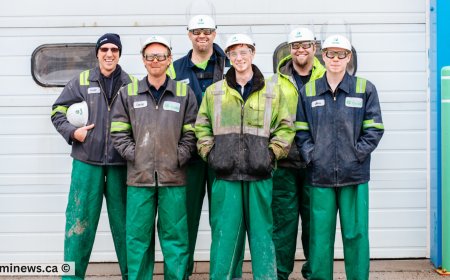Structural metal and platework fabricators and fitters Opportunities in Canada: A Comprehensive Immigration, Salary, and Duties Guide
Welcome to the pathway to Canada immigration for skilled professionals and trade workers. This guide is specifically tailored for Structural metal and platework fabricators and fitters looking to work and settle in Canada, offering a deep dive into the essential aspects of immigration and employment in this field.
Introduction
In this article, we will delve into the career and immigration prospects in Canada for Structural metal and platework fabricators and fitters. With the National Occupation Classification code of NOC 7235, these professionals play a crucial role in the fabrication and fitting of structural metal components for buildings, bridges, and other structures. Our discussion will encompass the profile description, main job duties, education and licence requirements, skills needed, median age and retirements, salary details, and the possible visa options for those looking to pursue this career in Canada. Let's explore the opportunities and requirements for aspiring Structural metal and platework fabricators and fitters in Canada.
What is the Profile Description of a Structural metal and platework fabricators and fitters as per the Canadian National Occupation Classification (NOC) Standards?
Structural metal and platework fabricators and fitters are skilled professionals who work in various industries such as structural steel fabrication, boiler manufacturing, and shipbuilding. Their main responsibility is to fabricate, assemble, fit, and install steel or metal components for a wide range of structures such as buildings, bridges, tanks, towers, and pressure vessels. These individuals play a crucial role in ensuring the structural integrity and safety of the products they work on. They are typically employed in fabrication plants and manufacturing companies that specialize in heavy machinery and construction projects.
What are the Main Job Duties of a Structural metal and platework fabricators and fitters in Canada?
- Study engineering drawings and blueprints to determine materials needed and plan the cutting sequence efficiently.
- Construct patterns and templates for layout guidance.
- Assemble and fit metal sections and plates using welding, bolting, riveting, or other methods.
- Operate heavy-duty metal-working machines to bend, cut, form, punch, drill, or shape metal components.
- Install fabricated components into final products.
What are the Education, Certifications, and Licensing Requirements to Work as Structural metal and platework fabricators and fitters in Canada?
To qualify as a Structural metal and platework fabricator and fitter, candidates must typically have completed secondary school. They must also have completed a three- to four-year apprenticeship program or have a combination of over four years of work experience in the trade, along with some college or industry courses in structural steel and platework fabrication. Trade certification is available for metal fabricators (fitters) on a voluntary basis in all provinces, as well as for marine technicians in Nova Scotia and British Columbia, and for boiler and related equipment assemblers and structural metal fabricators (non-construction) in Quebec. Additionally, qualified metal fabricators (fitters) can obtain a Red Seal endorsement by passing the interprovincial Red Seal examination.
What Essential Skills are Required for Structural metal and platework fabricators and fitters to succeed in Canada?
Structural metal and platework fabricators and fitters need to possess a variety of essential skills to be successful in their profession. They must be able to lay out reference points and patterns, assemble and fit plates and sections to form structures, weld or bolt sections together, and set up and operate heavy-duty metal-working machines. Additionally, they must be capable of constructing patterns and templates, rigging, hoisting and moving materials to storage areas or within the worksite, studying engineering drawings and blueprints to determine materials required, and planning the sequence of tasks to cut metal most efficiently. Finally, they must have the ability to install fabricated components in the final product with accuracy and precision. These skills are essential for structural metal and platework fabricators and fitters to excel in their profession.
What is the Median Age and Retirement Age for Structural metal and platework fabricators and fitters in Canada?
It appears that there is no specific data available for the median age and average retirement age of skilled professionals working as Structural metal and platework fabricators and fitters. This could be due to a lack of comprehensive research or data collection on this specific group of workers. It is important for organizations and researchers to gather more information on the demographics and trends within this occupation to better understand the aging workforce and plan for future workforce needs.
How many job openings exist for Other Structural metal and platework fabricators and fitters in Canada, and what's their provincial distribution?
In Canada, there are a total of 89 job openings for the position of Structural metal and platework fabricators and fitters. Of these job openings, the province of Quebec has the highest number of job openings with 27 positions available. Following closely behind is Ontario with 26 job openings, and British Columbia with 14 job openings. Saskatchewan has 8 job openings, while Nova Scotia has 6 job openings. Both Manitoba and New Brunswick have 3 job openings each, Alberta and New Brunswick have 2 job openings each, and the Northwest Territories has 1 job opening. Overall, Quebec and Ontario have the highest number of job openings for this position, while Alberta and the Northwest Territories have the fewest.
What is the hourly wage or salary of Structural metal and platework fabricators and fitters in different Provinces of Canada?
In Canada, the wages for Structural metal and platework fabricators and fitters vary by province. In British Columbia, the median wage is $30.22, with a low of $20.00 and a high of $40.00. Alberta has the highest wages for this profession, with a median wage of $32.00, a low of $21.22, and a high of $41.80. On the other hand, Manitoba has the lowest wages, with a median wage of $23.00, a low of $16.00, and a high of $29.67. Newfoundland and Labrador also offer high wages for this profession, with a median wage of $34.46, a low of $23.50, and a high of $40.00. Overall, wages for Structural metal and platework fabricators and fitters tend to be higher in provinces like Alberta, British Columbia, and Newfoundland and Labrador, while Manitoba offers lower wages for this profession.
What are the various visa options available for Structural metal and platework fabricators and fitters migrating to Canada?
Structural metal and platework fabricators and fitters have a variety of visa options available to them for migrating to Canada. They can apply for the Express Entry Visa Category, which is a fast-track immigration system for skilled workers. Additionally, they can also explore Provincial Nominee Programs, which allow provinces in Canada to nominate individuals who want to immigrate to their province. Another option is Employer Sponsored Work Visas, where an employer in Canada can sponsor a foreign worker for a job. Structural metal and platework fabricators and fitters may be eligible to apply directly under these programs. There may also be other visa options currently open for this profile. To learn more about the visa options and discuss all the details, interested individuals can book an appointment with our professionals today.
Have Questions or Need Assistance?
If you have any queries or require assistance with your immigration plans, we're here to help. Our experienced immigration consultants are ready to provide personalized guidance tailored to your specific needs.
Don't hesitate to reach out and schedule an appointment today. Whether you're seeking clarification on immigration processes, exploring visa options, or need support with documentation, we're dedicated to assisting you every step of the way.
Book an appointment with our team to discuss your immigration goals and receive expert guidance for your journey to Canada.
What's Your Reaction?
 Like
0
Like
0
 Dislike
0
Dislike
0
 Love
0
Love
0
 Funny
0
Funny
0
 Angry
0
Angry
0
 Sad
0
Sad
0
 Wow
0
Wow
0







































































